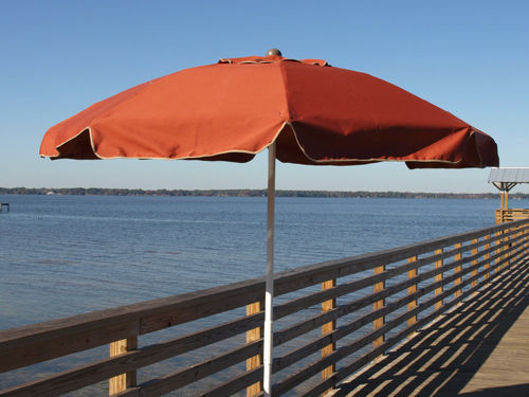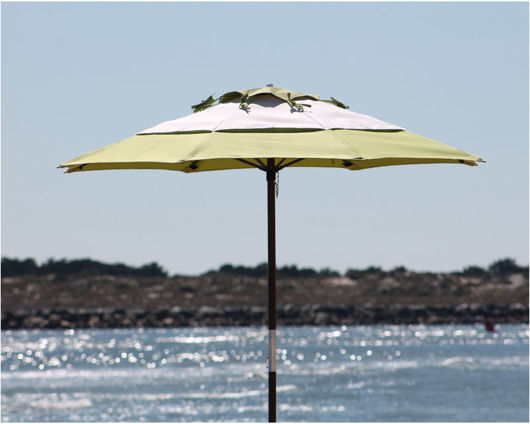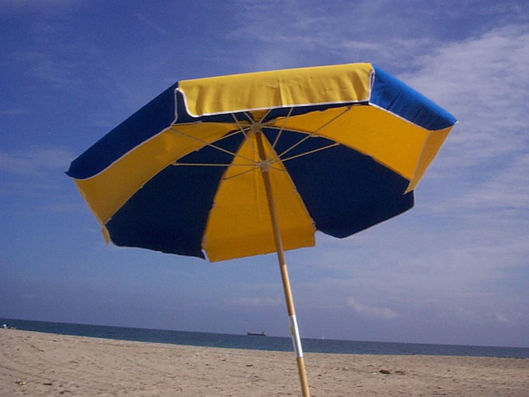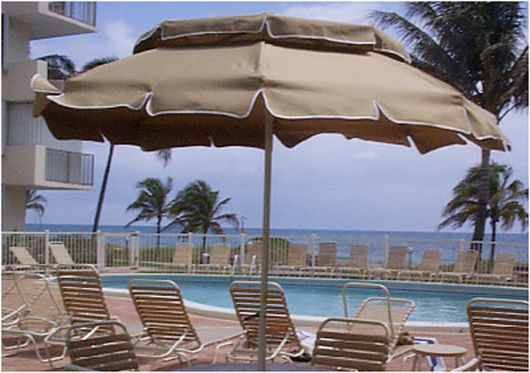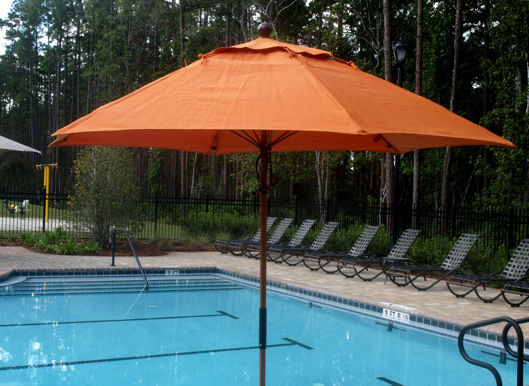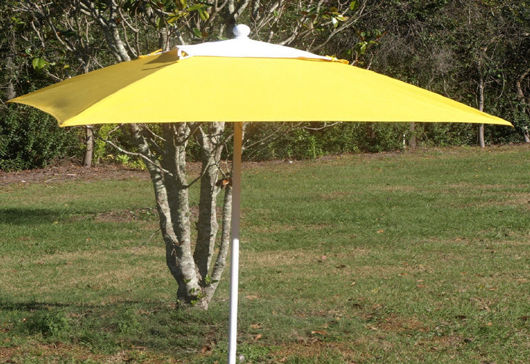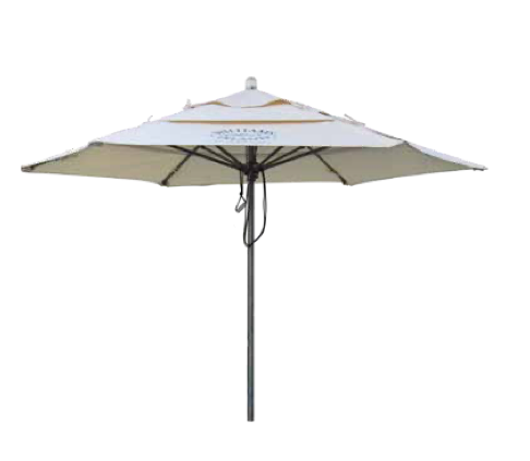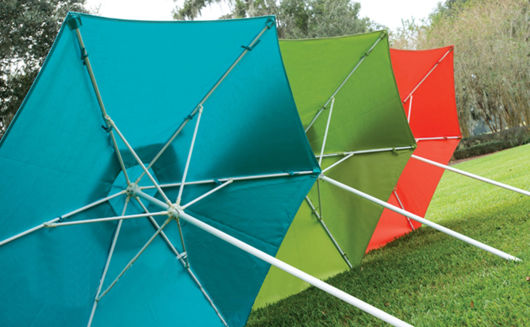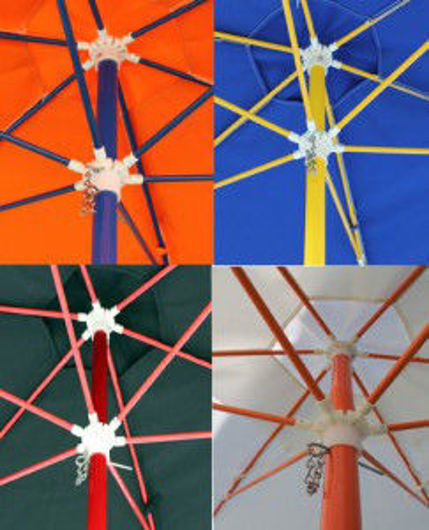- My Cart 0
- Wishlist 0
- Filters
Fiberlite Fiberglass Umbrellas Umbrellas and Parasols
- Home /
- Fiberlite Umbrellas /
- Fiberlite Fiberglass Umbrellas Umbrellas and Parasols
Commercial Fiberlite Fiberglass Beach Umbrella - 48 Pack Free Shipping
Concession Fiberlite Fiberglass Beach Umbrella - 24 Pack Free Shipping
Fiberglass Beach Umbrellas By Fiberlite
KEY WEST UMBRELLAS BY FIBERLITE
LAS OLAS UMBRELLAS BY FIBERLITE
MANDARIN FIBERGLASS UMBRELLAS BY FIBERLITE
NAUTICAL HEAVY DUTY MARKET UMBRELLA
SAN MARCO FIBERGLASS UMBRELLAS
SOUTH BEACH UMBRELLAS BY FIBERLITE
SPECTRUM VIBRANT COLOR BEACH UMBRELLAS
In the realm of personal weather protection, umbrellas have long been a staple accessory for those seeking shelter from the elements.
For centuries, these portable canopies have shielded us from rain, snow, and harsh sunlight, evolving in design and materials as technology has advanced. Among the various types of umbrellas available today, fiberglass models have gained significant popularity, prompting many to wonder: are fiberglass umbrellas truly a better option? To answer this question, we must delve into the intricacies of umbrella construction, compare fiberglass to traditional materials, and consider the practical implications for everyday use.
Fiberglass, a composite material consisting of fine glass fibers embedded in a polymer resin, has revolutionized numerous industries with its unique properties.
When applied to umbrella construction, fiberglass offers a compelling array of benefits that have caught the attention of both manufacturers and consumers alike. To understand why fiberglass umbrellas might be considered a superior choice, it's essential to examine the material's inherent characteristics and how they translate to improved performance in the context of weather protection.
One of the most significant advantages of fiberglass umbrellas is their exceptional strength-to-weight ratio.
Fiberglass ribs, which form the skeleton of the umbrella's canopy, are remarkably lightweight yet incredibly sturdy. This combination allows for the creation of umbrellas that are easy to carry and maneuver without sacrificing durability. Traditional umbrellas often utilize metal ribs, typically made of steel or aluminum, which can be heavier and more prone to bending or breaking under stress. The lightweight nature of fiberglass means that even larger umbrella models remain manageable, making them an attractive option for those who prioritize portability without compromising on coverage.
Flexibility is another key attribute that sets fiberglass umbrellas apart from their counterparts.
Unlike rigid metal ribs, fiberglass ribs have a natural elasticity that allows them to bend and flex under pressure without permanent deformation. This flexibility is particularly advantageous in windy conditions, where traditional umbrellas might invert or sustain damage. When a gust of wind catches a fiberglass umbrella, the ribs can temporarily flex to accommodate the force, then return to their original shape once the wind subsides. This resilience not only extends the lifespan of the umbrella but also enhances its functionality in challenging weather scenarios.
Corrosion resistance is a crucial factor to consider when evaluating the longevity of any weather-exposed item, and fiberglass excels in this regard.
Unlike metal components that can rust or corrode over time, especially when frequently exposed to moisture, fiberglass remains impervious to such degradation. This resistance to corrosion ensures that fiberglass umbrellas maintain their structural integrity and appearance even after prolonged use in wet conditions. The long-term durability of fiberglass umbrellas can translate to cost savings for consumers, as they may need to replace their umbrellas less frequently compared to those made with more vulnerable materials.
The electrical properties of fiberglass provide an additional layer of safety that is often overlooked in umbrella design.
Fiberglass is an excellent electrical insulator, meaning it does not conduct electricity. This characteristic becomes particularly relevant in the context of thunderstorms, where the risk of lightning strikes is a concern. While it's always advisable to seek proper shelter during electrical storms, the non-conductive nature of fiberglass offers an extra measure of protection compared to metal-framed umbrellas, which could potentially act as conductors in the unlikely event of a lightning strike.
From an aesthetic perspective, fiberglass umbrellas offer designers greater flexibility in creating visually appealing and innovative models.
The material can be molded into various shapes and sizes, allowing for more diverse and creative umbrella designs. Additionally, fiberglass can be easily colored or painted, enabling manufacturers to produce umbrellas in a wide range of hues and patterns without compromising the material's inherent properties. This versatility in design and customization options makes fiberglass umbrellas attractive to consumers who view their rain gear as both a functional necessity and a fashion accessory.
Environmental considerations have become increasingly important in consumer product choices, and fiberglass umbrellas have both advantages and drawbacks in this area.
On the positive side, the durability and longevity of fiberglass umbrellas mean they need to be replaced less often, potentially reducing overall waste. However, the composite nature of fiberglass can make recycling challenging, as separating the glass fibers from the resin matrix is not always feasible or economically viable. Some manufacturers are exploring more sustainable production methods and investigating ways to improve the recyclability of fiberglass components, but this remains an area for future development in the industry.
When it comes to performance in extreme weather conditions, fiberglass umbrellas often outshine their traditional counterparts.
The combination of strength, flexibility, and lightweight construction makes them particularly well-suited for handling strong winds and heavy rainfall. Many high-end windproof umbrellas feature fiberglass components specifically because of their ability to withstand and recover from the stress of gusty conditions. For individuals living in areas prone to sudden storms or unpredictable weather patterns, the reliability of a fiberglass umbrella can provide peace of mind and consistent protection.
The ergonomics of umbrella use is another area where fiberglass models can offer significant benefits.
The reduced weight of fiberglass umbrellas makes them easier to hold for extended periods, which can be particularly advantageous for those with limited hand strength or mobility issues. The balanced weight distribution and responsive flexibility of fiberglass ribs can also contribute to improved handling and control, making it easier to navigate crowded sidewalks or adjust the umbrella's position in shifting wind directions.
Despite the numerous advantages of fiberglass umbrellas, it's important to acknowledge that they may not be the ideal choice for every consumer or situation.
One potential drawback is the initial cost, as fiberglass umbrellas often come with a higher price tag compared to basic metal-framed models. This higher upfront investment can be a deterrent for budget-conscious shoppers or those who tend to misplace umbrellas frequently. However, proponents argue that the long-term durability and performance of fiberglass umbrellas can offset the initial expense, making them a worthwhile investment for those who view their umbrella as a long-term weather protection solution.
The manufacturing process of fiberglass umbrellas is more complex than that of traditional umbrellas, which can impact both cost and environmental considerations.
The production of fiberglass involves energy-intensive processes and the use of synthetic resins, which may raise concerns for environmentally conscious consumers. However, advancements in manufacturing techniques and materials science are continually improving the efficiency and sustainability of fiberglass production. As the industry evolves, we may see further innovations that address these concerns and enhance the overall eco-friendliness of fiberglass umbrella production.
For travelers and commuters, the choice between fiberglass and traditional umbrellas can be particularly significant.
The lightweight nature of fiberglass umbrellas makes them an attractive option for those who need to carry their rain protection with them throughout the day. Compact folding umbrellas with fiberglass components offer a balance of portability and durability that can be ideal for urban environments or frequent travelers. The resilience of fiberglass also means these umbrellas are more likely to withstand the rigors of daily use and transportation, maintaining their functionality even when subjected to the wear and tear of constant packing and unpacking.
In professional settings, the appearance and performance of one's accessories, including umbrellas, can contribute to overall impressions.
Fiberglass umbrellas, with their sleek designs and reliable functionality, can project an image of sophistication and preparedness. The reduced likelihood of embarrassing umbrella malfunctions, such as inversion or breakage, can be particularly valuable in business contexts where maintaining composure and professionalism is crucial. For individuals who view their umbrella as an extension of their professional attire, the refined aesthetics and dependable performance of a high-quality fiberglass model can be a worthwhile investment.
The impact of umbrella choice extends beyond individual use to commercial and hospitality sectors.
Hotels, restaurants, and event venues often provide umbrellas for guest use, and in these high-traffic environments, the durability and longevity of fiberglass umbrellas can offer significant advantages. The reduced need for frequent replacements can lead to cost savings over time, while the improved performance can enhance guest satisfaction and safety. Additionally, the flexibility in design allows businesses to select umbrellas that complement their branding and aesthetic, turning a functional item into a memorable part of the customer experience.
As urban planning increasingly focuses on pedestrian-friendly spaces and sustainable transportation options, the role of personal weather protection becomes more prominent.
Fiberglass umbrellas, with their lightweight construction and wind-resistant properties, align well with the needs of urban dwellers who rely on walking or public transportation. The ability to easily carry and maneuver these umbrellas in crowded spaces can encourage more people to venture out in inclement weather, supporting the vitality of city centers and reducing reliance on personal vehicles for short trips during rainy periods.
In the realm of sports and outdoor activities, specialized fiberglass umbrellas have found a niche market.
Golf umbrellas, for example, often utilize fiberglass components to create oversized canopies that can withstand the open expanses of golf courses where wind exposure is significant. The combination of coverage, lightweight design, and resilience makes fiberglass umbrellas popular among outdoor enthusiasts who require reliable weather protection without added burden during their activities. This specialized application demonstrates the versatility of fiberglass as a material and its ability to meet the demands of specific user groups.
As we consider the question of whether fiberglass umbrellas are a better option, it becomes clear that the answer is nuanced and depends on individual needs and priorities.
For many users, the benefits of strength, flexibility, lightweight construction, and durability make fiberglass umbrellas a superior choice. The improved performance in challenging weather conditions, coupled with the potential for long-term cost savings due to increased longevity, presents a compelling case for choosing fiberglass models. However, considerations such as initial cost, environmental impact, and personal preferences for traditional designs should not be overlooked.
Ultimately, the rise of fiberglass umbrellas represents a broader trend in consumer products towards high-performance materials and innovative design.
As technology continues to advance, we can expect further refinements in umbrella construction, potentially incorporating new composite materials or hybrid designs that build upon the strengths of fiberglass while addressing its limitations. For now, fiberglass umbrellas stand as a testament to how material science can transform even the most familiar objects, offering improved functionality and durability in our daily battle against the elements. Whether they are unequivocally "better" may be subjective, but their growing popularity and proven benefits suggest that fiberglass umbrellas have earned their place as a formidable option in the world of personal weather protection.
In the realm of personal weather protection, umbrellas have long been a staple accessory for those seeking shelter from the elements.
For centuries, these portable canopies have shielded us from rain, snow, and harsh sunlight, evolving in design and materials as technology has advanced. Among the various types of umbrellas available today, fiberglass models have gained significant popularity, prompting many to wonder: are fiberglass umbrellas truly a better option? To answer this question, we must delve into the intricacies of umbrella construction, compare fiberglass to traditional materials, and consider the practical implications for everyday use.
Fiberglass, a composite material consisting of fine glass fibers embedded in a polymer resin, has revolutionized numerous industries with its unique properties.
When applied to umbrella construction, fiberglass offers a compelling array of benefits that have caught the attention of both manufacturers and consumers alike. To understand why fiberglass umbrellas might be considered a superior choice, it's essential to examine the material's inherent characteristics and how they translate to improved performance in the context of weather protection.
One of the most significant advantages of fiberglass umbrellas is their exceptional strength-to-weight ratio.
Fiberglass ribs, which form the skeleton of the umbrella's canopy, are remarkably lightweight yet incredibly sturdy. This combination allows for the creation of umbrellas that are easy to carry and maneuver without sacrificing durability. Traditional umbrellas often utilize metal ribs, typically made of steel or aluminum, which can be heavier and more prone to bending or breaking under stress. The lightweight nature of fiberglass means that even larger umbrella models remain manageable, making them an attractive option for those who prioritize portability without compromising on coverage.
Flexibility is another key attribute that sets fiberglass umbrellas apart from their counterparts.
Unlike rigid metal ribs, fiberglass ribs have a natural elasticity that allows them to bend and flex under pressure without permanent deformation. This flexibility is particularly advantageous in windy conditions, where traditional umbrellas might invert or sustain damage. When a gust of wind catches a fiberglass umbrella, the ribs can temporarily flex to accommodate the force, then return to their original shape once the wind subsides. This resilience not only extends the lifespan of the umbrella but also enhances its functionality in challenging weather scenarios.
Corrosion resistance is a crucial factor to consider when evaluating the longevity of any weather-exposed item, and fiberglass excels in this regard.
Unlike metal components that can rust or corrode over time, especially when frequently exposed to moisture, fiberglass remains impervious to such degradation. This resistance to corrosion ensures that fiberglass umbrellas maintain their structural integrity and appearance even after prolonged use in wet conditions. The long-term durability of fiberglass umbrellas can translate to cost savings for consumers, as they may need to replace their umbrellas less frequently compared to those made with more vulnerable materials.
The electrical properties of fiberglass provide an additional layer of safety that is often overlooked in umbrella design.
Fiberglass is an excellent electrical insulator, meaning it does not conduct electricity. This characteristic becomes particularly relevant in the context of thunderstorms, where the risk of lightning strikes is a concern. While it's always advisable to seek proper shelter during electrical storms, the non-conductive nature of fiberglass offers an extra measure of protection compared to metal-framed umbrellas, which could potentially act as conductors in the unlikely event of a lightning strike.
From an aesthetic perspective, fiberglass umbrellas offer designers greater flexibility in creating visually appealing and innovative models.
The material can be molded into various shapes and sizes, allowing for more diverse and creative umbrella designs. Additionally, fiberglass can be easily colored or painted, enabling manufacturers to produce umbrellas in a wide range of hues and patterns without compromising the material's inherent properties. This versatility in design and customization options makes fiberglass umbrellas attractive to consumers who view their rain gear as both a functional necessity and a fashion accessory.
Environmental considerations have become increasingly important in consumer product choices, and fiberglass umbrellas have both advantages and drawbacks in this area.
On the positive side, the durability and longevity of fiberglass umbrellas mean they need to be replaced less often, potentially reducing overall waste. However, the composite nature of fiberglass can make recycling challenging, as separating the glass fibers from the resin matrix is not always feasible or economically viable. Some manufacturers are exploring more sustainable production methods and investigating ways to improve the recyclability of fiberglass components, but this remains an area for future development in the industry.
When it comes to performance in extreme weather conditions, fiberglass umbrellas often outshine their traditional counterparts.
The combination of strength, flexibility, and lightweight construction makes them particularly well-suited for handling strong winds and heavy rainfall. Many high-end windproof umbrellas feature fiberglass components specifically because of their ability to withstand and recover from the stress of gusty conditions. For individuals living in areas prone to sudden storms or unpredictable weather patterns, the reliability of a fiberglass umbrella can provide peace of mind and consistent protection.
The ergonomics of umbrella use is another area where fiberglass models can offer significant benefits.
The reduced weight of fiberglass umbrellas makes them easier to hold for extended periods, which can be particularly advantageous for those with limited hand strength or mobility issues. The balanced weight distribution and responsive flexibility of fiberglass ribs can also contribute to improved handling and control, making it easier to navigate crowded sidewalks or adjust the umbrella's position in shifting wind directions.
Despite the numerous advantages of fiberglass umbrellas, it's important to acknowledge that they may not be the ideal choice for every consumer or situation.
One potential drawback is the initial cost, as fiberglass umbrellas often come with a higher price tag compared to basic metal-framed models. This higher upfront investment can be a deterrent for budget-conscious shoppers or those who tend to misplace umbrellas frequently. However, proponents argue that the long-term durability and performance of fiberglass umbrellas can offset the initial expense, making them a worthwhile investment for those who view their umbrella as a long-term weather protection solution.
The manufacturing process of fiberglass umbrellas is more complex than that of traditional umbrellas, which can impact both cost and environmental considerations.
The production of fiberglass involves energy-intensive processes and the use of synthetic resins, which may raise concerns for environmentally conscious consumers. However, advancements in manufacturing techniques and materials science are continually improving the efficiency and sustainability of fiberglass production. As the industry evolves, we may see further innovations that address these concerns and enhance the overall eco-friendliness of fiberglass umbrella production.
For travelers and commuters, the choice between fiberglass and traditional umbrellas can be particularly significant.
The lightweight nature of fiberglass umbrellas makes them an attractive option for those who need to carry their rain protection with them throughout the day. Compact folding umbrellas with fiberglass components offer a balance of portability and durability that can be ideal for urban environments or frequent travelers. The resilience of fiberglass also means these umbrellas are more likely to withstand the rigors of daily use and transportation, maintaining their functionality even when subjected to the wear and tear of constant packing and unpacking.
In professional settings, the appearance and performance of one's accessories, including umbrellas, can contribute to overall impressions.
Fiberglass umbrellas, with their sleek designs and reliable functionality, can project an image of sophistication and preparedness. The reduced likelihood of embarrassing umbrella malfunctions, such as inversion or breakage, can be particularly valuable in business contexts where maintaining composure and professionalism is crucial. For individuals who view their umbrella as an extension of their professional attire, the refined aesthetics and dependable performance of a high-quality fiberglass model can be a worthwhile investment.
The impact of umbrella choice extends beyond individual use to commercial and hospitality sectors.
Hotels, restaurants, and event venues often provide umbrellas for guest use, and in these high-traffic environments, the durability and longevity of fiberglass umbrellas can offer significant advantages. The reduced need for frequent replacements can lead to cost savings over time, while the improved performance can enhance guest satisfaction and safety. Additionally, the flexibility in design allows businesses to select umbrellas that complement their branding and aesthetic, turning a functional item into a memorable part of the customer experience.
As urban planning increasingly focuses on pedestrian-friendly spaces and sustainable transportation options, the role of personal weather protection becomes more prominent.
Fiberglass umbrellas, with their lightweight construction and wind-resistant properties, align well with the needs of urban dwellers who rely on walking or public transportation. The ability to easily carry and maneuver these umbrellas in crowded spaces can encourage more people to venture out in inclement weather, supporting the vitality of city centers and reducing reliance on personal vehicles for short trips during rainy periods.
In the realm of sports and outdoor activities, specialized fiberglass umbrellas have found a niche market.
Golf umbrellas, for example, often utilize fiberglass components to create oversized canopies that can withstand the open expanses of golf courses where wind exposure is significant. The combination of coverage, lightweight design, and resilience makes fiberglass umbrellas popular among outdoor enthusiasts who require reliable weather protection without added burden during their activities. This specialized application demonstrates the versatility of fiberglass as a material and its ability to meet the demands of specific user groups.
As we consider the question of whether fiberglass umbrellas are a better option, it becomes clear that the answer is nuanced and depends on individual needs and priorities.
For many users, the benefits of strength, flexibility, lightweight construction, and durability make fiberglass umbrellas a superior choice. The improved performance in challenging weather conditions, coupled with the potential for long-term cost savings due to increased longevity, presents a compelling case for choosing fiberglass models. However, considerations such as initial cost, environmental impact, and personal preferences for traditional designs should not be overlooked.
Ultimately, the rise of fiberglass umbrellas represents a broader trend in consumer products towards high-performance materials and innovative design.
As technology continues to advance, we can expect further refinements in umbrella construction, potentially incorporating new composite materials or hybrid designs that build upon the strengths of fiberglass while addressing its limitations. For now, fiberglass umbrellas stand as a testament to how material science can transform even the most familiar objects, offering improved functionality and durability in our daily battle against the elements. Whether they are unequivocally "better" may be subjective, but their growing popularity and proven benefits suggest that fiberglass umbrellas have earned their place as a formidable option in the world of personal weather protection.





CUSTOMER SERVICE
888.320.1161

- Galtech Market Umbrellas (74)
- Beach Wholesale Commercial Beach Umbrellas (7)
- Teak Umbrellas (2)
- Fiberlite Umbrellas (30)
- Boat Umbrella (0)
- Market Umbrellas Buyer Guide (0)
- Market Umbrellas - Fiberglass (16)
- Market Umbrellas - Stainless Steel (2)
- Cantilever Umbrella (6)
- Bases (17)
- Accessories (5)
- concession beach umbrella colors (0)
- Italian Large Commercial Grade Shades (7)
- Mahogany Umbrellas by Greencorner (6)
- Eden Garden Giant Umbrellas (6)
- Woodline Shade Umbrellas (21)
- Umbrosa Umbrella (23)
- QUAD UMBRELLA (1)
- How to Use (0)
- Mantis Covers (0)
- Mantis Mounts (0)
- COMMERCIAL BEACH UMBRELLAS
- commercial rated umbrellas
- CONCESSION UMBRELLA
- consession beach umbrellas
- fiberglass beach umbrella
- fiberlite beach umbrellas
- Galtech 8 x 11 Market Umbrella 279
- Galtech 9-ft. Aluminum Bamboo Patio Umbrella
- GALTECH PATIO UMBRELLA
- May Collection
- paraflex wall mounted umbrella
- umbrosa
- Umbrosa Collection
- wholesale beach umbrellas
- wholesale umbrella


